Have you ever dreamed of packing all your possessions in an old school bus and heading for the hills? Well dream no more! Here are some free floor plans for your school bus conversion to help you start your project of a lifetime. Get those creative juices flowing and check out these clever conversions, creative uses of space and all round wonderful ideas.
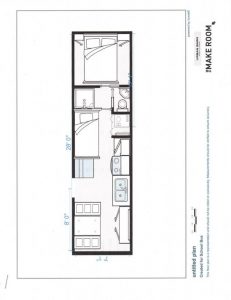
Find a great resource at the forum skoolie.net where users share floor plans and tips that can really help get you on the right track. 
Great ideas from Gone Camping. On this plan here we have a free space for a euro recliner, so you can save your space and get one more sleeping place. Not sure if you can afford a tiny home renovation? Check out the car title loan calculator to find out what your vehicle qualifies for.
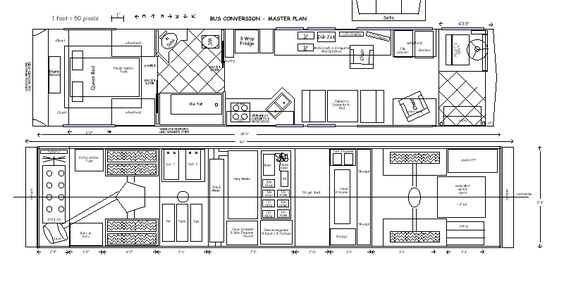
Just one of the great ideas on the forum at Bus Nut.
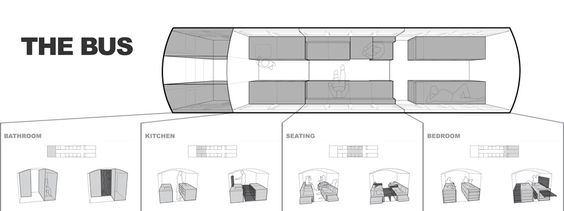
Get the full story with pictures on this great build at Hank Bought a Bus.
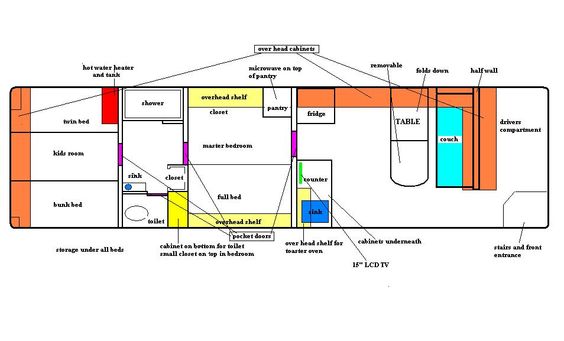
Another great plan from Skoolie.com for your school bus to tiny house conversion.
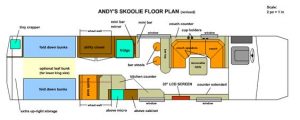
This skoolie floor plan comes to us from schoolbusdriver.org
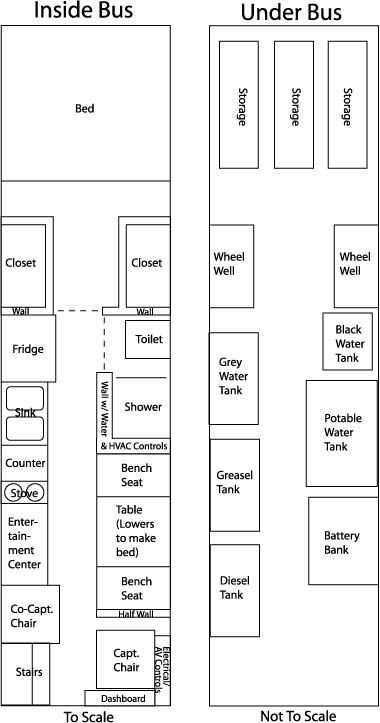
Custom Evolution Coach bring you this great free floor plan for your bus conversion.




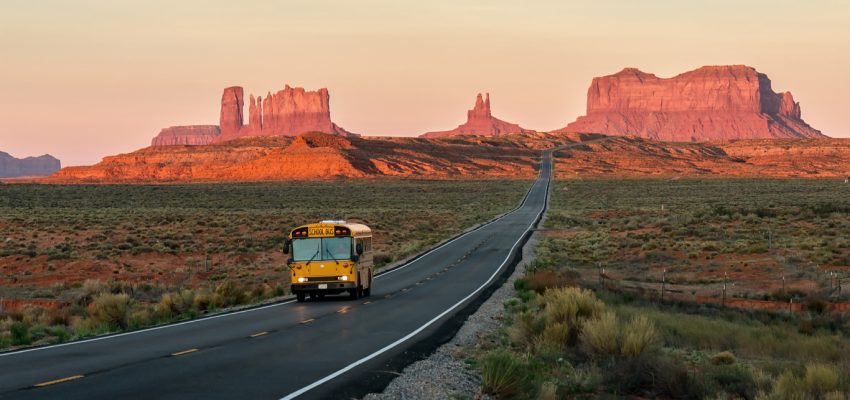
Great article! I’ve been dreaming about it since my childhood. But I think it’s not a simple task. I have a question, How much does a bus conversion cost?
Hey Joshua, I’m researching for my Skoolie conversion and I think the average number is probably around $20,000. Of course, that depends on what bus you find, what you plan to do with it and if you do the work or not. I hope that helps
We purchased a 12 year old, 38-ft long International DT466E with just under 80K miles. It was $10-thousand. Very minimal rust. A real gem which could’ve been put back in service. Ten thousand may seem like a lot, but not when you consider the value in terms of quality. We could have very easily purchased another bus for half what we paid, then poured in thousands for engine repairs, body upgrades to mitigate rust, etc. So it was six of one, half-a-dozen of another.
Next, we did the solar install first (after the obvious gutting process of removing seats, etc). The real estate on the roof dictated the rest of the system. We have twelve 100-watt panels up there. That 1.2 kW then shaped the rest of the system. The average daily sunlight in our area, zone 5, is about four hours. So we calculated our battery bank recharge rate, from absolute flat, to fully charged, to be within this four hour window. And we came up with 200 Ah. The system is also a 24-volt system, so, if you go with 12 volts that would be a 400 Ah battery bank. We went with 24 volts because of voltage drop to long runs of DC for lights etc., and the slight efficiency improvement for our inverter. Total cost of our electrical system (so far) is just over $8-thousand. With the tax credits from our state and fed-govt, the bottom line was just under $5-thousand.
And that’s as far as I have got with this conversion so far. Just under $20-thousand. We estimated spending right around 50 to 60 thousand, or about the same as an average down payment for a house. So far we are right in middle of our goal posts for budget. The “hard” part is actually doing the work. I’m all by myself on this and we just had an addition to our family. So, the bus has been sitting for almost a year! Perhaps when our son gets older he can help me pick up where I left off 😉
Make your travel experience effortless with our Muskoka Airport Taxi & Limo Service. From private taxis to Muskoka Airport to luxurious Limo transfers to Toronto, we offer reliable options. Our Shuttle service ensures convenient and timely arrivals, ensuring you reach your destination comfortably, no matter the time or distance.
Greetings from Florida! I’m bored to tears at work so I decided to rowse your site oon my
iphone during lunch break. I love tthe knowledge you present here
and can’t wait to take a look when I get home.
I’m surprised at how fasst your blog loadedd on mmy mobile ..
I’m not even using WIFI,just 3G .. Anyhow, great site! http://Boyarka-Inform.com/
The variety on black cheap nude is endless. Be it doggy style, cowgirl, or solo masturbation, these Latinas know how to keep things spicy. Their interest and love for exploring new pleasures are apparent in every photo. You’ll never get bored with the endless excitement they bring.
Hmm it appears like your website ate my first comment (it wass super long) so
I guess I’ll jist sum it uup whst I had
written and say, I’m thoroughly enjoying your blog.
I too am an aspiring blog writer but I’m still new to the whole thing.
Do you have any points ffor inexperienced blog writers?
I’d certainly appreciate it. https://worldwiderecruiters.ca/employer/bubinga-options-com/
Howdy would you mind letting me know which web host you’re utilizing?
I’ve loaded your blog in 3 completely different browsers and I must say this blog loads a lot faster then most.
Can you suggest a good internet hosting provider at a honest
price? Cheers, I appreciate it!
my web page – nordvpn coupons inspiresensation
Select the Right Slot Game
Not all slot titles arre the same. Some have greater win chances, more entertaining bonus features,
or settinjgs that are simply more fun for you like Thepokies106.
Always look at tthe RTP (Return too Player) percentage—a btter RTP
means a stronger probability over time. Try out a range of
machines in demo mode first to determine which
ones you enjoy and which are worth playing. https://AU.Trustpilot.com/review/wolf-winner-casino.bet
On african rimjob teen 18 , it’s not really just about appearing; it’s about lifestyle out fantasies. These Latinas dive heavy into their wildest desires, from intense sex scenes to playful solo instances with their preferred toys. Watching these people suck big cocks and have their looks covered in ejaculate is truly exhilarating.
nordvpn coupons inspiresensation 350fairfax
Amazing blog! Do you have any helpful hints for aspiring writers?
I’m hoping to start my own site soon but I’m
a little lost on everything. Would you recommend starting with a free platform like WordPress or go for a paid option? There are
so many choices out there that I’m completely overwhelmed ..
Any tips? Many thanks!
How Far Is Nassau Airport To Atlantis? Not far! Enjoy Limousine Service Atlantis or Atlantis Bahamas Airport Shuttle and reach the Atlantis Resort in comfort with our Nassau Airport To Atlantis Transportation services.
Our main priority is to provide comfort, and elegance in our luxury cars and limousines. Our goal is to offer seamless airport transfers in Dubai for both personal and professional trips.
Explore the wide range of party bus options available in Miami. Our rentals offer fun and stylish transportation for birthdays, bachelor parties, or special events. Choose from various bus sizes and styles to ensure your event is a memorable one.
Explore the vibrant Miami party bus scene with diverse rental options. Visit bestmiamipartybus.com for rentals and services. Find the perfect party bus in Miami, FL, for any occasion, ensuring a memorable and stylish transportation experience tailored to your needs.
Maryland’s premier charter bus service offers motor coaches for group transportation, serving both Maryland and DC. With reliable motor coach transportation, they specialize in accommodating groups, providing efficient and comfortable travel solutions across the region.
Airport Transfers Bahamas provides an exclusive fleet designed to deliver luxury and peace of mind. Our vehicles are maintained to the highest safety standards, ensuring a superior travel experience.
Airporttransfernassau.com is the place to find Nassau Airport to Rosewood Baha Mar transportation and rates. We offer safe, reliable, and professional transportation services from Nassau Airport to Rosewood Baha Mar for all your needs
Our luxury shuttle from Nassau Airport to Atlantis ensures reliable and stress-free Atlantis Paradise Island transportation with the best shuttle services in Nassau.
If you’re in need of a chauffeur in Dubai, then look no further. At Dubai Hummer Limo Services (DHL) we offer the best chauffeur service and luxury car service in town.
Opt for affordable luxury car service Dubai without compromising on elegance. Whether you need a luxury car service from Dubai Airport to Abu Dhabi or a special event transfer, we provide premium service at competitive rates.
Reliable airport taxi service in Niagara Falls provides convenient transportation to Pearson, Buffalo, and Hamilton Airports. We offer seamless transfers, including taxis from Niagara Falls to Toronto Airport, Niagara-on-the-Lake, and Billy Bishop Airport for a smooth travel experience.
Airport Shuttle Peterborough offers affordable, convenient transportation to Pearson Airport. Whether you need a Peterborough to Pearson airport shuttle or a Peterborough to Toronto airport shuttle, our services are designed to ensure comfort and reliability. Book your ride with Coach Canada airport shuttle Peterborough for a smooth, stress-free airport transfer.
Our Buffalo Airport to Burlington transfer services include both luxury and budget-friendly options. Whether you need a Buffalo Airport limo service to Burlington or an airport shuttle from Buffalo Airport to Burlington, we have the perfect solution.
Book your Muskoka to Billy Bishop Airport Taxi for stress-free travel. Our Best Airport Taxi Muskoka ensures on-time service. Whether you need a Muskoka to Toronto Pearson Airport Car Service or a Muskoka Executive Airport Taxi, we guarantee the best experience.
Experience exclusive Airport Mercedes Sprinter Transfers in Chicago. Our premium service ensures comfort and style for group travels. Whether it’s for business or leisure, enjoy personalized transportation solutions tailored to your needs and preferences.
Discover our reliable Long Beach Airport Shuttle Service for easy transportation to Los Angeles, Orange, Riverside, and San Bernardino Counties. Enjoy pickups from Rancho Cucamonga, Upland, Ontario, and more for a stress-free airport journey.